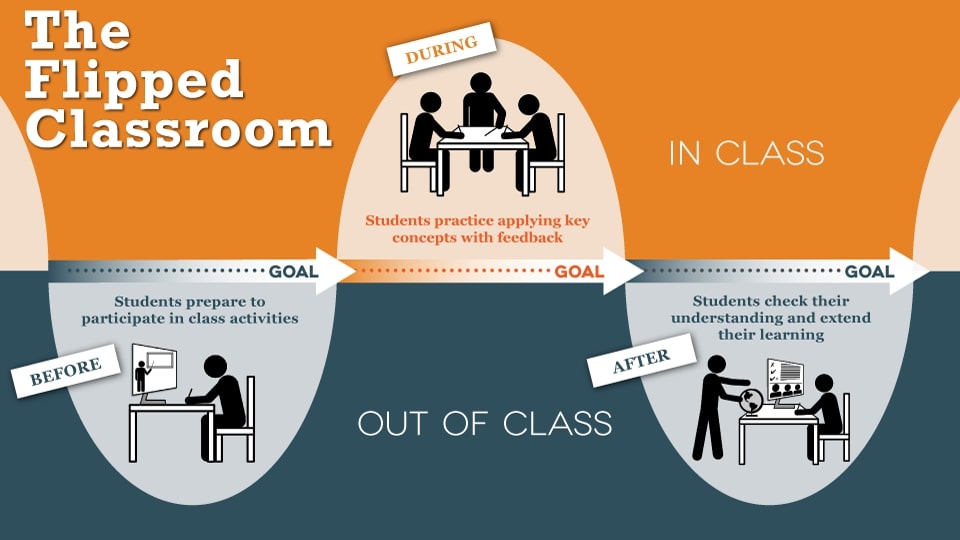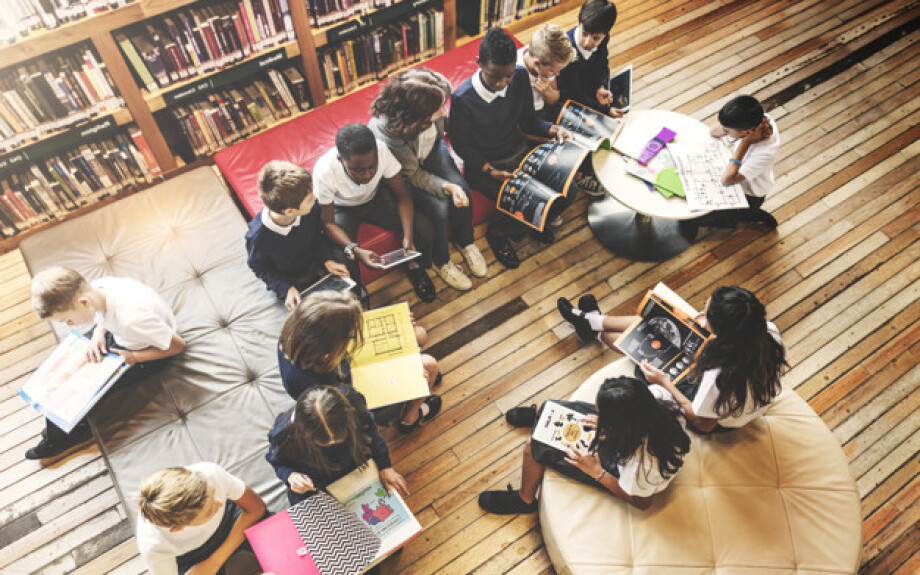Nowadays there are a lot of approaches to teaching and learning. Among them, you can find an approach that is based on student-centered learning, flipped classroom. In the traditional model of classroom first the teacher introduces the material to the students, and then it is practised at home whereas in a flipped classroom the notion of classroom-based learning is completely inverted, and students learn the new material at home, and to practise it in the classroom.
Benefits of a flipped classroom
- When your students get ready for the lesson, they can do it whenever and wherever they want until its deadline.
- After learning the whole material at home by watching online lectures or carrying out some research, students are already prepared to ask their teachers questions on the content. Hence they get a chance to deepen their knowledge and to have some discussions with their peers and teacher during the lesson.
- Students speak more and more, because they already have a general idea about the lesson.
- If one of your students is ill and absent, he/she can catch up with his/her classmates easier with the flipped approach than with a traditional one.
- In the flipped classroom students get a chance to analyze the new material on their own and to improve their critical thinking.
- The video lectures that you make for your students can be reused with other students.
Drawbacks of a flipped classroom
- Sometimes it is really difficult to motivate some of the students to use this approach, especially when they do not like homework.
- If you are going to implement flipped classroom for the first time, it will take you much time to organise and to introduce its structure to your students.
- Technology issues, such as bad internet connection or no laptop may hinder the working procedure.
- Not all students are self — disciplined and you will have to control their work, otherwise, they will not do it.
How to apply in class?

Before trying to use the flipped approach in the classroom, the following factors should be taken into account:
- Students’ age and personality,
- their abilities — weak and strong skills,
- their interests and the topic of the lesson.
This approach can suit those teenagers and adults, who are responsible, self — determined, and do not mind much homework. You should not risk applying this method with students, who usually do not do their homework, are not fond of doing tasks on their own. Otherwise, you will not know what to do in class, when these students announce they have not learnt the topic before the lesson.
Next point is your students’ abilities. If they are good at reading, have an excellent pronunciation, why waste time reading long texts in the lesson? Instead, you can ask them to read the text at home and to have a discussion during your classes. On the other hand, if they have a difficulty in understanding new grammar material, you can give some hints before the lesson, send them a video explaining the grammar and if they still do not understand the rules, you can explain in the lesson.
Another thing to be considered in flipped learning is students’ interests. If they are really keen on the coming topic, e.g. “Climate change”, “Travelling”, “Animal world”, “Airports”, “Aviation”, “Healthy food” they will surely enjoy learning before the lesson and sharing their opinion, having some discussions with classmates in the lesson.
Flipped Classroom Examples
Let’s illustrate some interesting examples of a flipped classroom, which will come in handy.
- The Standard Inverted Classroom: Students watch video lectures and read materials relevant to the next day’s class as a “homework” before the lesson. During class time, students practice what they have learnt.
- The Discussion-Oriented Flipped Classroom: Teachers assign tutorial videos, or some TED Talks, TED-Ed, YouTube videos, and other resources. Class time is then devoted to discussions of the subject.
- Vocabulary: For a lot of students learning new words can be a really tough thing. To ease the learning procedure, you can send them the list of the new words with their definitions and sentences in advance. Thus they will come to the lesson already knowing the presenting vocabulary. Here online vocabulary games turn out to be really helpful — English vocabulary word games, online vocabulary games, vocabulary games.
- Listening: Listening is definitely an important skill in learning a foreign language. However, quite a lot of time is spent on it during the lesson. That’s why you will save your time if you send listening activities as a hometask. During the lesson, you will have enough time to discuss the topic of listening and work on speaking. British Council and Agenda WEb provide with lots of listening activities for different levels.
- Reading: Whether it is a story or just an informative text, you can assign it as a home reading. To motivate your students in the reading tasks, ask them to do some post — reading activities, like true/false/not given, multiple choice, fill in the gaps, etc. Thus they will have more clear understanding of the text and will be ready for a debate with their peers in the class.
In fact, if a teacher uses a flipped approach in a proper way taking into consideration the student’s ability, his weak and strong skills, this approach will definitely turn out to be helpful.







 Маргарита Аветисян
Маргарита Аветисян 


